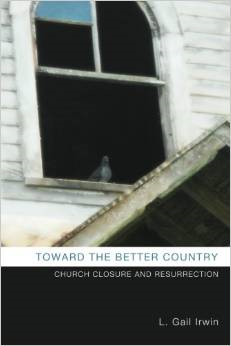In November, I was invited to meet with clergy and lay leaders in the Hudson River Presbytery in New York. There, under the direction of Rev. Rhonda Kruse, their Connections and Change Presbyter, I had several occasions over two days to help foster conversation about creative responses to church decline.
The first was a shared Sunday worship service with three small churches who are located near each other but had never worshiped together before. The church we met in–Bethlehem Presbyterian– was established in 1729 (see photo). Talk about resilience! With a combined choir to inspire us, four pastors led worship and gathered with members over coffee afterward. The common refrain I heard was, “Maybe we should do this again!”
Later that afternoon, 70 people from around the Presbytery gathered to hear a summary of ideas from my book and talk among themselves about their own experiences of decline and revitalization. It was a time to be honest about the struggles they were experiencing, and to recognize that they were not alone. Presbytery staff were on hand to listen and respond to concerns, encouraging churches to consider options for revitalization, merger, or closure, depending on their circumstances.
On Monday morning, I was taken to the beautiful Stony Point Retreat Center, where the Presbytery Committee on Ministry was meeting. Once again, I shared stories from the book and judicatory leaders clustered in small groups to talk about how to help struggling churches they are in contact with.
Over meals and on car rides, I listened to stories of churches facing incredible obstacles and still finding divine creativity in the thick of it!
At one point, I said to my gracious host, Rhonda: “I don’t feel I can do much for these leaders. I’m just coming and going, but they are staying here to do the hard work.” Her response encouraged me: “You’re helping them start the conversations they need to have.”
Since I started the book project, I have always believed that honest conversation, whether it includes lament, idea sharing, critique or celebration, is the best way to hitch our hearts to the Holy Spirit’s power to make all things new. By listening and learning from each other and our neighborhoods, we recognize that God is already at work in us; we just need to catch onto what God is doing.
I appreciate the foresight the Hudson River Presbytery has had in helping their churches team up to converse about their future. All our local churches are really Christ’s one Church, so why do we keep struggling alone?
If you are interested in having an honest conversation with other churches in your area about change, decline, and God’s new thing, and if you want help starting the conversation, contact me, and maybe we can make it happen.












